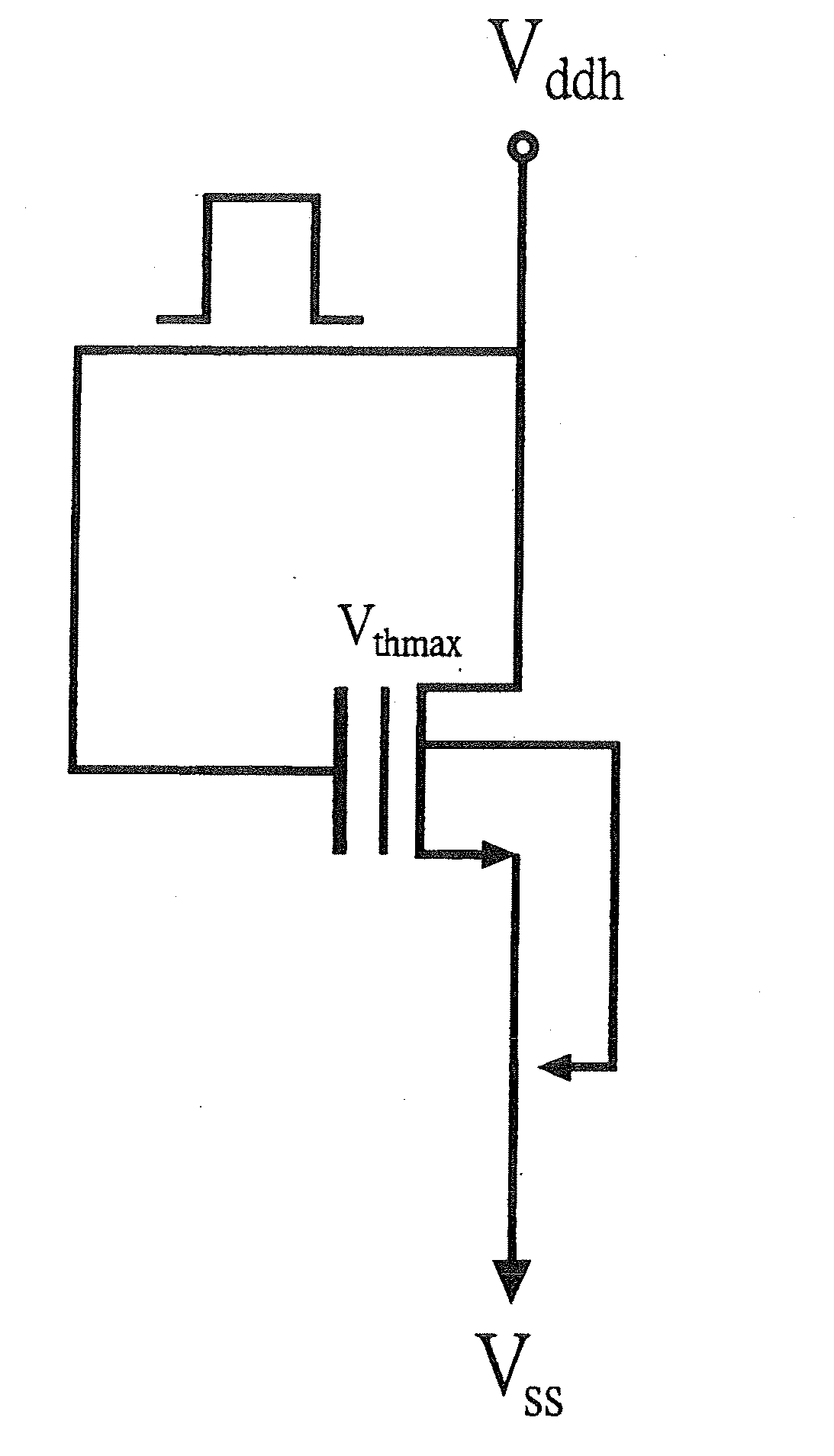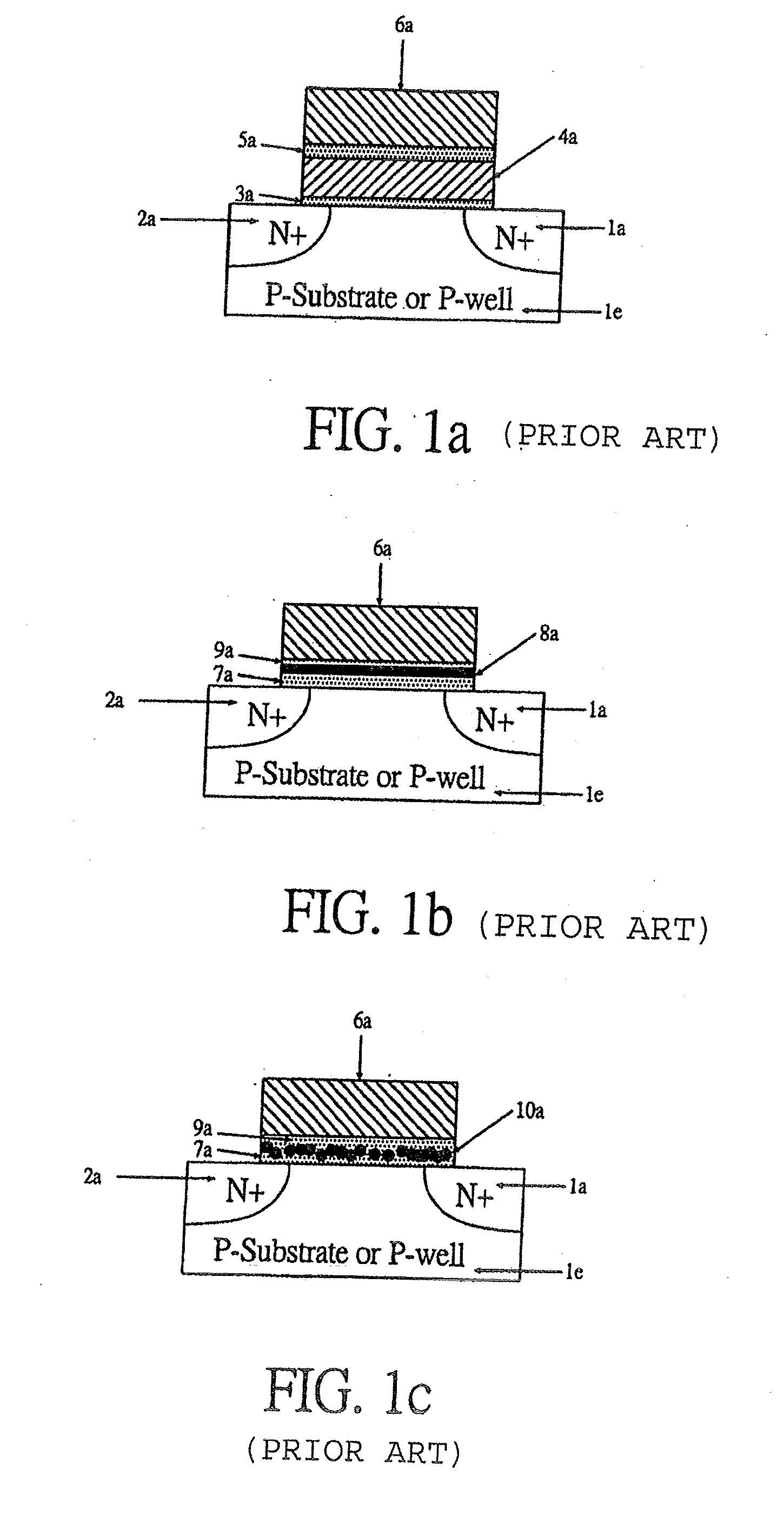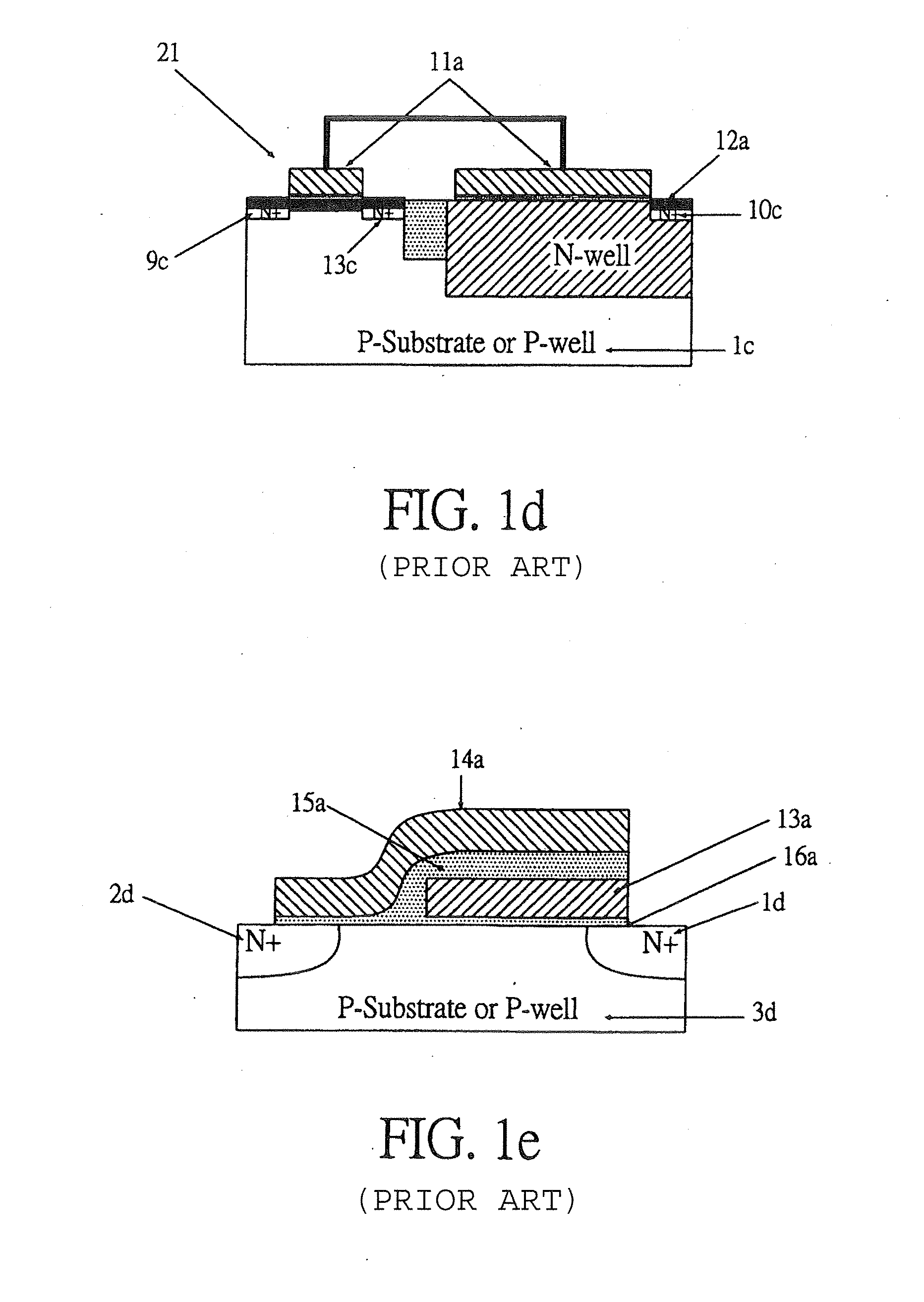Structures and methods to store information representable by a multiple-bit binary word in electrically erasable, programmable read-only memory (eeprom)
a multi-bit binary and read-only memory technology, applied in the field of electrically erasable programmable read-only memory (eeprom), can solve the problems of requiring long and time-consuming convergence procedures during programming, affecting the recognition of multiple levels in array memory cells with a large number of silicon, etc., to achieve a large silicon area, reduce the per-bit cost, and reduce the silicon memory cell area
- Summary
- Abstract
- Description
- Claims
- Application Information
AI Technical Summary
Benefits of technology
Problems solved by technology
Method used
Image
Examples
Embodiment Construction
[0052]The present invention includes methods and structures for storing any one of N voltage values in a single EEPROM cell, where each of the N voltage values can be represented by an n-bit binary word, where n=log2 N and N in an integer (e.g., 8, 16 or 32), representable by a power of 2. Thus if N is 16, n is 4 and a four-bit binary code word is sufficient to represent any one of sixteen (16) possible voltage values which can be stored in the EEPROM cell.
[0053]The present invention relates to structures and methods for enabling multiple threshold voltage operation in a single EEPROM cell. Multiple threshold voltage level operation makes possible storing in a single cell information representable by n bits . Hereinafter, storing such information in a single cell is also referred to as “multiple-bit storage”. Multiple-bit storage in a single cell reduces the per-bit cost in Electrically Erasable Programmable Read-Only Memories (EEPROM). For instance, storing two bits in a single cel...
PUM
 Login to View More
Login to View More Abstract
Description
Claims
Application Information
 Login to View More
Login to View More - R&D
- Intellectual Property
- Life Sciences
- Materials
- Tech Scout
- Unparalleled Data Quality
- Higher Quality Content
- 60% Fewer Hallucinations
Browse by: Latest US Patents, China's latest patents, Technical Efficacy Thesaurus, Application Domain, Technology Topic, Popular Technical Reports.
© 2025 PatSnap. All rights reserved.Legal|Privacy policy|Modern Slavery Act Transparency Statement|Sitemap|About US| Contact US: help@patsnap.com



